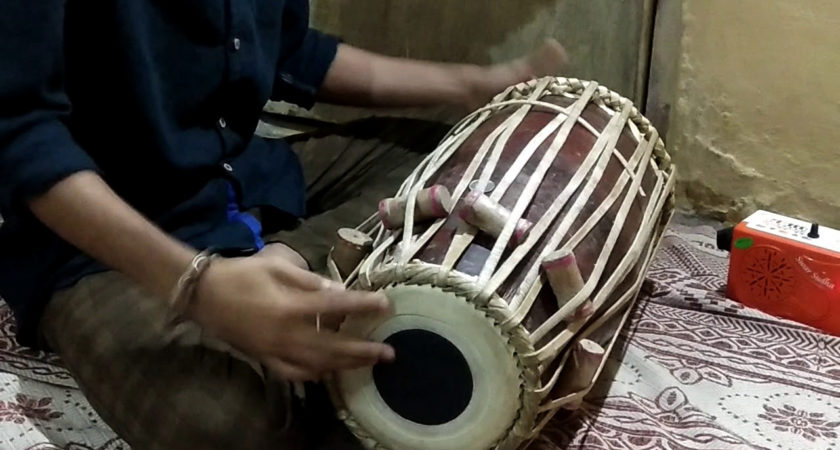The tabla and the mridangam form the basis for the rhythmic accompaniment of classical Indian music. The tabla has dominion in the north, while mridangam is used in the south. Both have a common ancestry in an archetypal mridang whose technique could be either powerful or delicate. Such technique is found today in the mridangam while the tabla is the recipient of the more delicate techniques.
Mridangam
The mridangam is one of the oldest Indian percussion instruments, originating at least 2,000 years ago. The two-headed drum is popular in both Carnatic classical musical from South India and Hindustani classical music from the north. This drum may also be called mrdanga, pakhawaj, or tannumai. There are slight variations between each instrument but all of them are descendants from the ancient mridang.
In percussion ensembles, particularly in Indian classical music, the mridangam is typically accompanied by the kanjira, tabla, or ghatam. The drum has a low, smooth tone and is capable of great harmonics because of the double, tunable, drum heads—one bass and one treble. The lower, bass side is called the thoppi or eda bhaaga and the higher, treble side is called valanthalai or bala bhaaga.
The body of the drum is constructed of hollow jackfruit wood, with each end covered by goatskin that is laced to the body with leather straps. Depending on the style of playing, there may be more than one layer on each drum head. The leather straps can be adjusted to change the tension of the drum heads, which changes pitch. The head of each drum has an area called the syahi, a circle of black paste that results in a clearer pitch and tone.
The drum is played horizontally while sitting with legs crossed on the floor. The drum rests in the player’s lap and the larger end, the thoppi, is played with the dominant hand while the smaller end, the valanthalai, is played with the other hand. Mridangams vary slightly in size but most are around 60 cm in length with 16 cm diameter valanthalai and 18 cm diameter thoppi.
Course Details – Mrudangam
A well-structured course where the students will learn the fundamentals of Mridangam that includes basic Carnatic music theory, Indian Percussion theory and complete Aadi Thalam lessons. The courses consists of around 10 modules in which the students will be learning Thisra (3 beats), Chathusra (4 beats) and Kanta (5 beats) in Aadhi thalam, Mohara and Koravai and some interesting korvais in Aadhi thalam. On completion of this course, the students will be able to perform a solo (Thani Aavartham) in Aadhi thalam and accompany simple songs in aadhi thalam.
Tabla
The tabla is the most commonly played drum set in North Indian music. It is the instrument most frequently used to accompany vocal and instrumental music, and dance; whereas its primary function is to maintain the metric cycle in which the compositions are set. Though the tabla is essentially an accompanying instrument, the tabla players are also soloists in their own right, and many have vast repertoires of elaborate compositions handed down orally from generation to generation.
Course Details- Tabla
This course for beginners teaches students the art of playing the tabla, an Indian percussion instrument, which is also an important accompaniment instrument in hindustani classical style of music. This course will teach students the basics about the tabla such as the make and different parts of the tabla like the chat, syahi, maidan, gajara etc. It will introduce and familiarise students with the sitting posture, hand positioning, before delving into the basic strokes and bols or syllables (e.g Dha, Dhin, Na, Tirakita etc) of the tabla.
Contact us for Further Info +917907077891 (Week Days : 08:00 AM to 06:00 PM | Sunday :11:00 AM to 6:00 PM)

